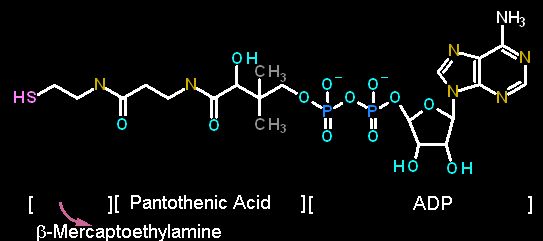
Usually denoted as "CoA" or "CoA-SH". Where the "-SH" indicates the thiol at the end. The coenzyme can be divided into three parts as noted above: ADP, Panthothenic Acid (vitamin B5) and β-Mercaptoethylamine. The Sulfur on the end is the active portion involved in chemistry.

Here Coenzyme A is required for the Flavin dependent desaturation of a fatty acid.

Here Coenzyme A is required to "activate" the acetyle group so that it can make a C-C bond to another acetyl CoA. This can still be considered an Aldol Reaction since the thioester is acting a a ketone - as mentioned above.
